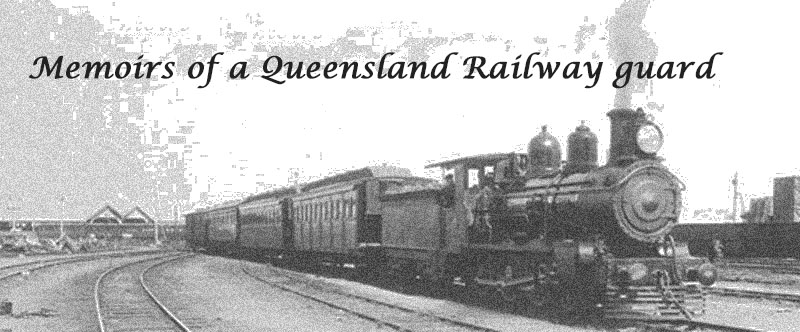|
|
|
|
Introduction INDIVIDUAL SUMMARIES
|
The Queensland Times, Friday, Oct 24, 1952: Railway Service A Guard’s Experiences – 4 (by T.A. Byrnes) In 1921 I made the acquaintance of Harold Parcell, who was fireman for Driver Beavis. Parcell was a member of a well-known athletic family and was born at Brassall. Harold and I joined the Rocklea Harriers’ Club, as there was no club in Ipswich affiliated with the Queensland Amateur Athletic Association. Harold Parcell won the Queensland cross-country championship on four occasions, two of the distances being 10 miles over open country. His time for the first race was 61min, 9sec. That was in 1921. In 1922 his time was 55min, 59 sec. A strong Botany team, from New South Wales competed at that time. Parcell also won several track championships, besides a number of handicap races in Brisbane. I consider Parcell was one of the best long-distance runners in Australia. When he and I journeyed to Melbourne in September 1923 to compete in the Olympic test marathon race of 26 miles from Frankston to Melbourne, he gained second place and owing to the wonderful condition he showed in the race, he was selected as ninth representative for Australia to run in the Olympic marathon, but on account of shortage of funds, he did not go overseas with the team. I myself finished in seventh place in that race out of 27 competitors. I was then 40 years of age. My best performance was in Brisbane, when I won the open mile handicap, on March 17 1924, at the Exhibition Grounds, beating a field of 30 runners. I was then 41 years of age. IPSWICH CLUB Shortly after, Parcell and myself formed a harriers’ club in Ipswich, which had a membership of about 50. The late Richard Hoskins, supervisor of the shunting yards, Ipswich, was President, and a good number of railway employees, including workshop employees, joined the club. The club won the novice cross-country championship of Queensland at Rocklea, over five miles, against strong opposition in 1930, and H. Parcell won the 15 miles modified marathon race in Brisbane in the same year. The Ipswich team again won the novice cross-country race in 1933. There were 73 entries in 1931. The beautiful gold Nissen memorial medial was won by Austin McMahon, of the Ipswich Club, from a strong field, over one mile, on the Brisbane Cricket Ground. A GUARD’S COMPETENCY A question was asked of me some years ago as to how long a guard would have to serve before he was fully competent? Well, it is like everything else in life – many years with a good deal of experience. There are several classes of training including coal trains, goods, or freight trains, mixed trains on branch lines, livestock trains, ballast trains, suburb passenger and mail train. All have different modes in railway working. Many years ago, I was booked on Sole Brothers circus train for about three weeks away from Ipswich. The driver was the late Bert Walton and W. Lane, as fireman, now classed as a driver, were my mates. We departed Ipswich on a Monday morning, and every township on the Brisbane Valley branch was booked for a performance. Our first stop was Lowood and as we were to prepare our own meals and camp on this train en route, fireman W Lane was selected as chef for the three of us. I had a good supply of potatoes and pumpkins given to me at Lowood and these were put in the guard’s van. The train was away from Ipswich till the following Monday and then departed for the Fassifern and Mount Edwards branches, then returned to Ipswich to work the main line from Rosewood to Helidon. Then the Toowoomba trainmen took over. Work on a circus train begins about midnight, shunting and loading the circus animals at the different loading banks. The time occupied on this train was about three hours each night. “ELEPHANT STRENGTH” Some years ago, I was on Wirth Bros.’ circus train on this branch, and it was decided to do some placing of wagons by elephant power, to save bringing out the engine too early. This was at Lowood. There were several wagons to be placed at the loading bank and one of the elephants was used to shift them. The elephant did his task quite easily, and I decided to test his strength further. I deliberately pinned down some handbrakes on the wagons, but it made no difference – he moved them easily.
|
